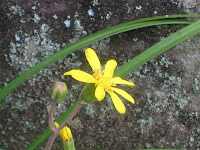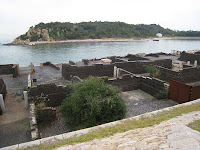 I read Kita Morio 'The House of Nire' (Translated by Dennis Keene, Kodansha International.)
I read Kita Morio 'The House of Nire' (Translated by Dennis Keene, Kodansha International.)Mori's grand father was a mental doctor who established and managed Aoyama Mental Hospital.
It is the story based on the family. Kita Morio passed away in October 24.
The sazanka looks good in front of the white wall.




























